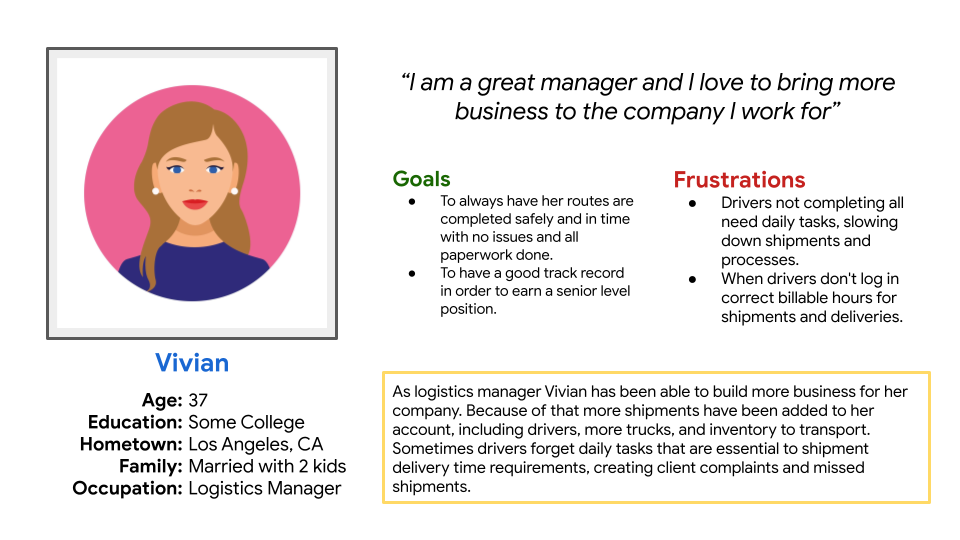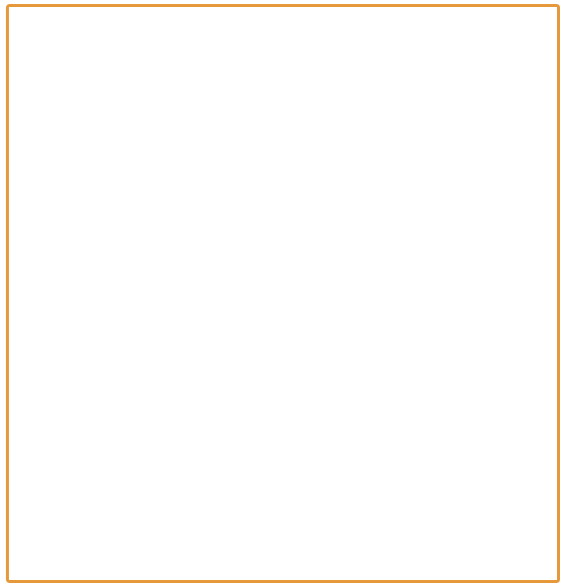Logistics Company
(Driver App)

The goal of the Logistics Tracking App is to streamline shipment tracking and task management, enhancing efficiency and accountability for clients and management. By offering real-time tracking, secure signature logging, and shipment reception insights, the app aims to improve on-time delivery rates and identify areas for improvement.
The Problem
Logistics Managers are extremely busy, who need their shipments and driver tasks to be completed by their drivers because client business operations are slowed if shipments are not made on time.

My Role
Head Product Designer
For this project I was the designer of the app, I held user search studies as well as usability studies to see how effective was the app. I also had the final decision of the design.
Who Are the Users?
User Story (Trucker)
As a trucker, I want to be able to make deliveries quick and easy so that I can go home and enjoy my family.
User Story (Manager)
As a Logistics Manager, I want to have all my employees complete all tasks fast and easy. So that my clients are stratified, and business continues to grow.

User Personas
These personas were created to use as a guide for the app and the user who would be using the app.




Key Challenges
Truck drivers tend to not like interacting with technology, and some gave push back
Client’s acknowledgments of delivery reception were often contested or marked as late.
Driver managers and dispatchers were having trouble getting drivers to submit all required docs at delivery and also had trouble tracking driver
driving hours.
Research Study
My research focused on evaluating driver experience at the current set of processes.

Clock-In and Tracking Hours
Drivers and managers found it hard to know exactly how many hours a driver had clocked in, which could be a serious state violation if a driver would drive too many hours in a day legally.
Acceptance of Shipments
One of the biggest issues was tracking when a delivery was made and who received it. At times a client would say a shipment was not delivered on time when indeed it was. So keeping track of deliveries was crucial.

Design Strategy
Understanding the high stakes and dynamic needs within the logistics sector, my design process for the logistic app was deeply empathetic and responsive to the voices of logistics managers who are at the frontline of operations. But keeping in mind that truck drivers would be the real users


Designing with Empathy:
Addressing Logistics Managers’ Needsm.

Wireframes
As you can see in the design, I wanted the buttons to clock in to be easily read and understood with the user flow directing users to not only clock in right away but to easily guide them to find their task for the day.




Researched Findings
User Test Results
My research focused on evaluating the user experience with the logistics company app, specifically its clock-in feature, task acceptance function, and client delivery acceptance signature capability.
Clock-In
Feature
Purpose: Users utilize this feature primarily for clocking into their shifts seamlessly.
Usability: Users found the feature generally helpful; however, the ease of use and challenges encountered during the process were not specified in the initial prompt. Further details are needed for comprehensive analysis.
Suitable Task Acceptance
Purpose: The feature is used for accepting new shipment tasks assigned to the users.
Usability: While users acknowledged the usefulness of being able to accept tasks through the app, the ease and challenges of this feature were not detailed. A deeper dive into user feedback is required for an in-depth understanding.
Client Delivery Acceptance Signature:
Purpose: This feature assists users in obtaining client signatures upon delivery acceptance efficiently.
Usability: Users found value in this functionality, although specific feedback regarding its ease of use and potential challenges was not provided in the prompts. Further user feedback and analysis are necessary to fully evaluate the functionality’s user-friendliness and effectiveness.
Final Designs
For the final designs, accessibility improvements were implemented by introducing a multifunctional button that not only facilitates language switching but also enhances user experience through the use of high-contrast content.

Conclusion and
Next Steps
The design off the app was a success not only does it help managers give and track tasks given to their drivers it also allows for countability from both the driver and the client by having an app where the client receives the shipment by signing the document on the app.
Next steps, is to give the designs and have the engineers create the app.
Losgitisc Tracking App
Looking at the user flow and usability of this app design. The design could be used for a multitude of different kinds of clients and industries.
